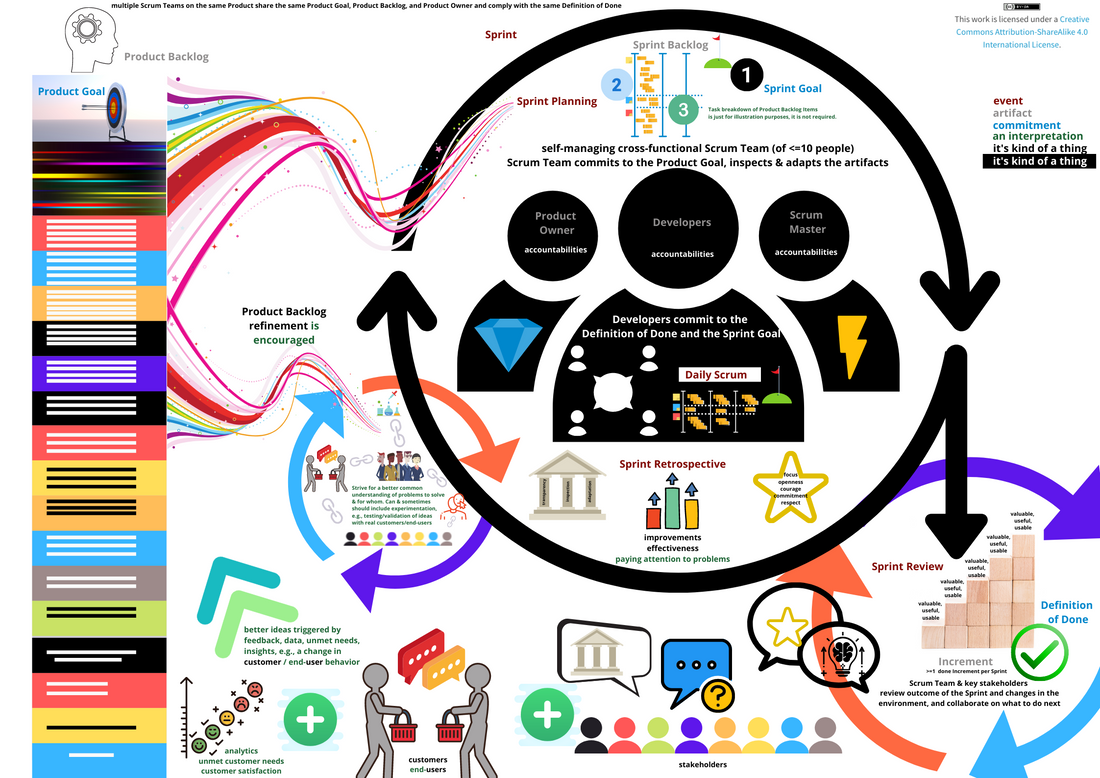
What's different in the 2020 Scrum Guide?
Share
The following are the changes that struck me the most in the 2020 Scrum Guide:
- "Customer" and (end) "users" (as opposed to "Scrum users" in the 2017 version) are both mentioned. I'd like to see more improvements in customer-centricity and outside-in thinking.
- Scrum can and should be attempted for a variety of types of knowledge work - software terms except "developer" have been removed
- The Development Team is dead, long live Developers - encouraging one team, even if developers commit to the Sprint Goal
- Experimentation is explicitly mentioned
- Scrum Team has 10 members or less
- Product Backlog Refinement is encouraged
- Sprint Goal found a proper home - its the commitment related to the Sprint Backlog and it's now included in the Sprint Backlog
- Definition of Done found a proper home - it's the commitment to the increment
- Scrum Values and empiricism is for the Scrum Team and people they interact with including stakeholders - stakeholders are mentioned twice as often in this version of the Scrum Guide
- Accountabilities of Scrum Master, Product Owner, and Developers are emphasized, thus supporting the antithesis of Patrick Lencioni's five dysfunctions of a team.
- Scrum Master is on the hook for the effectiveness of the Scrum Team. The Scrum Master serves the Scrum Team and the organization but is no longer referred to as a servant leader.
- Product Owner is on the hook for maximizing value and articulating/communicating the (new) Product Goal to support that - the Product Goal is the commitment related to the Product Backlog
- Developers are on the hook for delivering a useful & usable done increment that supports the Sprint Goal; there is not much point in the increment being usable if it's neither useful not valuable:).
- Continual improvement is expected, some improvements might even go into the next Sprint Backlog, and implicitly other improvements are immediate.
- Sprint Planning now has three topics - the why, the what, and the how
- The Scrum Team is self-managing "meaning they internally decide who does what, when, and how." Anyhow that term was defined by Richard Hackman, as described on the LeSS website.
- Feedback is dead, long live collaboration on what to do next.
- The word "consistency" has made an appearance. "Working in Sprints at a sustainable pace improves the Scrum Team’s focus and consistency."
Overall, I like it. What do you think?
Check out a discussion I had over a live stream with colleagues.

Email john@orderlydisruption.com to get the scalable vector graphics version.
https://linktr.ee/johncolemanxagility - social and podcast links
https://linkpop.com/orderlydisruption - order training from right here